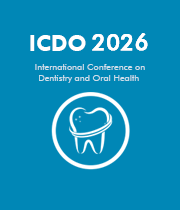Title: Primary molars with enamel defects in cleft lip and/or palate patients: A multicentre evaluation
Abstract:
Cleft lip and/or palate (CLP) is associated with several dental anomalies, including enamel defects such as hypoplasia or hypomineralisation. The majority of the literature on enamel defects in this cohort is centered around deciduous incisors and permanent incisors/molars - there is little research on enamel defects in primary molars.
A multicentre evaluation was therefore completed with the aims of establishing the prevalence of enamel defects in the primary molars of patients with CLP in England and Wales. Further aims were to find possible associations and determine the dental management of these teeth. Records of 5-year-olds born in 2012/2013 and attending the cleft units in Liverpool (n=104), Manchester (n=128), South Wales (Cardiff, n=97), London (Evelina, n=82) and Cambridge (n= 68, 2012 only) were reviewed.
Of the 461 CLP patients with 5-year-old audit data available, 11% (n=54) had evidence of enamel defects in at least one primary molar. Cleft palate (41%) and unilateral cleft lip and palate (35%) were the most common cleft types associated with enamel defects in primary molars. 13% of cases (n=7) were associated with cardiac co-morbidities and 13% of cases were syndromic (n=7). 23% of affected primary molars were also carious. The most common management for caries-free affected molars was prevention alone (55%) and the most common management for carious affected molars was composite restorations (31%).
It is possible there is a higher prevalence of enamel defects in the primary molars of children with CLP. Conducting a national prospective audit, as well as quantifying the prevalence of primary molars with enamel defects in the general population, will allow for further exploration of this hypothesis in the future.
Audience Take Away:
- Revision of the dental anomalies associated with cleft lip and/or palate
- Understand the implications of primary molars with enamel defects on the developing dentition
- Revision of the ways primary molars with enamel defects can be managed, particularly in young children
- Understand the avenues and opportunities for further research in this area




